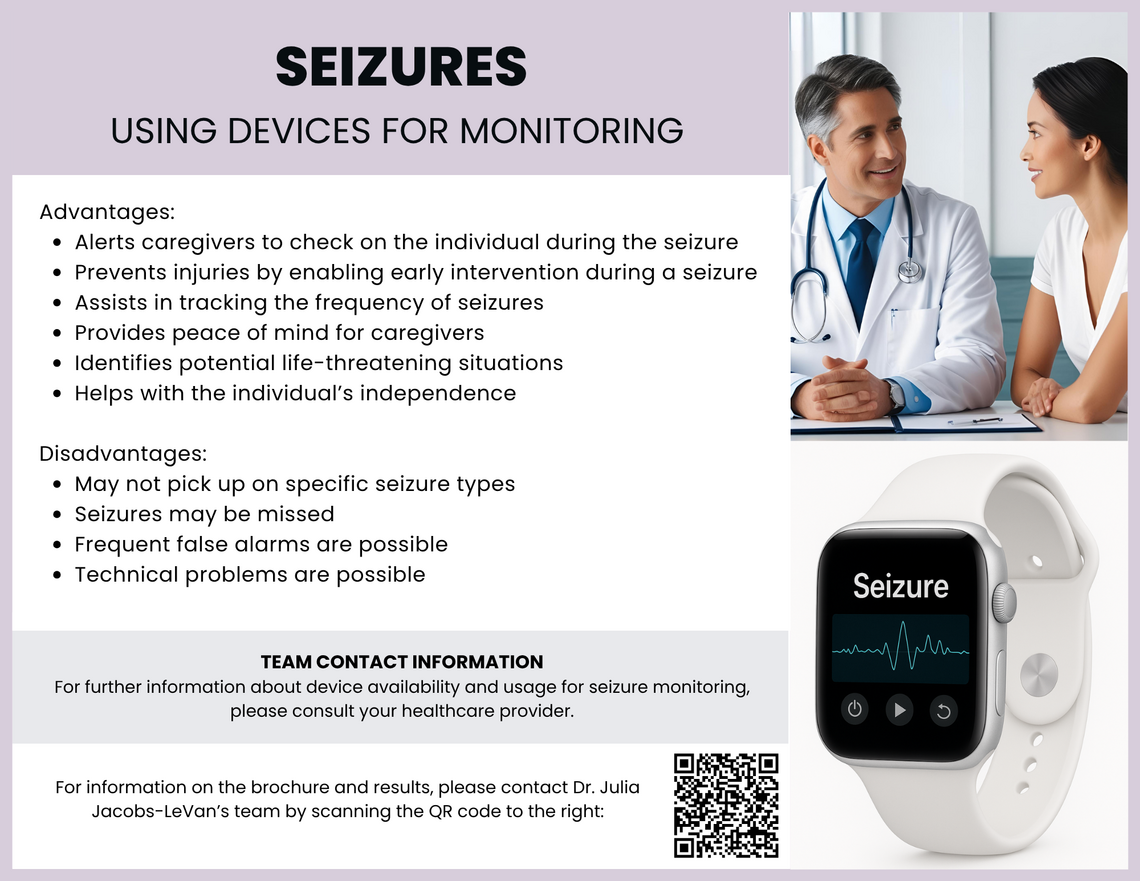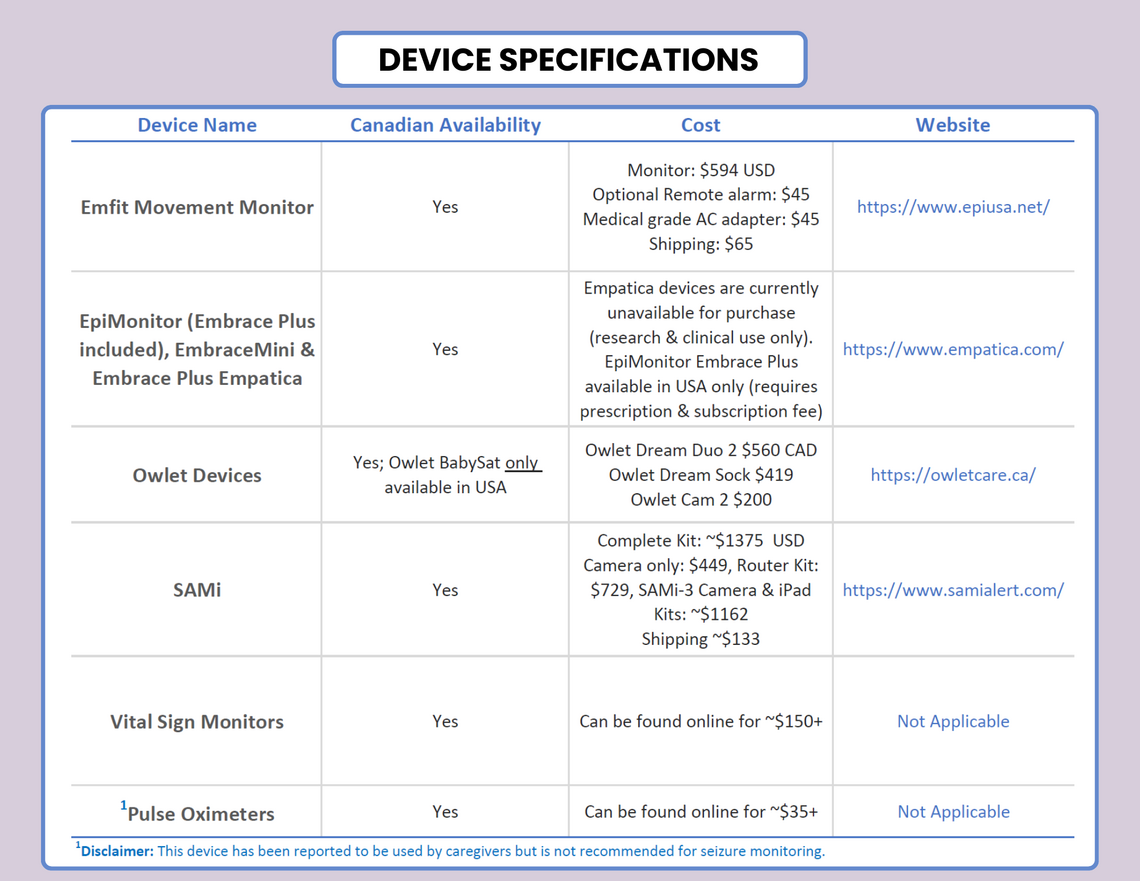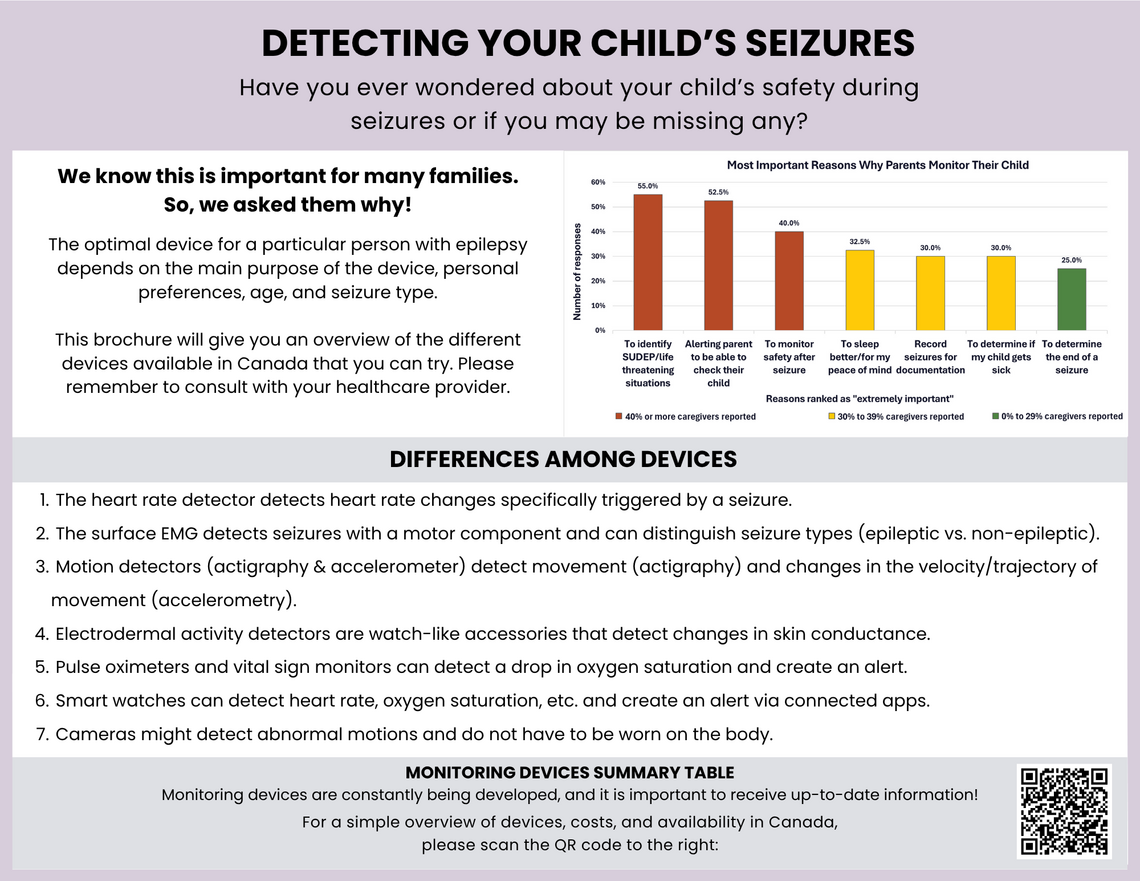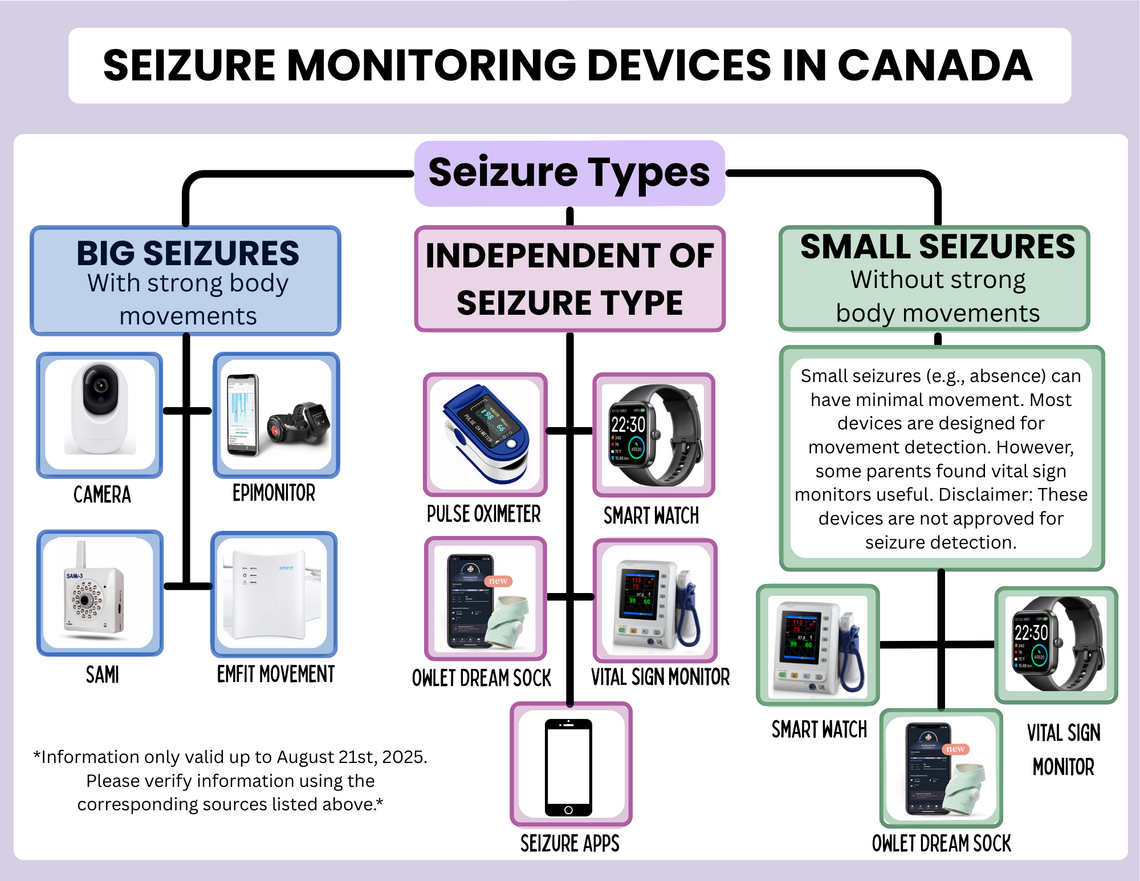Helping families explore options for support, safety, and peace of mind.
Why is this important?
Nighttime can feel overwhelming when caring for a child with epilepsy. Families often worry about missing seizures or not knowing when to help their child. Seizure monitoring devices are tools that may provide reassurance, help families feel safer, and feel more supported.
What does a monitoring device do:
- Alert caregivers during a seizure.
- Help track important signs like breathing or movement.
- Help prevent injuries by allowing early response times.
- Track seizures overtime to share with your healthcare provider.
- Provide peace of mind and promote independence.
What are the challenges of current devices:
- Not all seizures might be recognized.
- Many devices are not designed for children but adults.
- False alarms can be stressful, and might interrupt your sleep.
This is why we conducted a study to better understand how families use devices, and what are their advantages and disadvantages.
What families have told us from our study:
- Many parents used everyday tools like cameras or baby monitors to monitor their child's seizures
- Families want more information from healthcare providers about approved devices.
- False alarms are common but many parents tolerate them if the device helps with their child's safety.
- More than one third had tried monitoring devices, though most were not suggested by their doctor.
- Families often relied on cameras or baby monitors to monitor their child's seizures.
- Awareness of SUDEP (Sudden Unexpected Death in Epilepsy) was a major reason for why families chose to monitor with devices.
- Over 80% of families without devices wanted to try device-based seizure monitoring.
Tips for choosing a device:
Please see below for a sample resource of devices that are available or that can be used to help monitor your child's seizures. It is important to note that most devices are not approved by Health Canada for seizure monitoring purposes, but some are seen to help monitor symptoms that are often associated with specific seizure types.
When considering device-based monitoring, it may be helpful to consider what your child’s seizures look like (e.g. type of seizure, movement patterns, breathing changes) as different devices may work better for different seizure types:
- With strong body movements (e.g. generalized tonic-clonic) you may prefer to use cameras, SAMi, Epimonitor devices, etc.
- Without strong body movements (e.g. absence) you may prefer to use vital sign monitors, smart watches, etc.
- Any seizure type you may prefer to use smart watches, seizure app, etc.
Please always consult your healthcare provider(s) to see which devices are available, and most-suitable for your child.
To learn more about these monitoring devices, please download the "Epilepsy Monitor Devices" and "Device-Based Monitoring Brochure" PDFs located at the bottom of the page, created by Dr. Margarita Maltseva and Netanya Winterburn under the direction of Dr. Julia Jacobs-LeVan.






